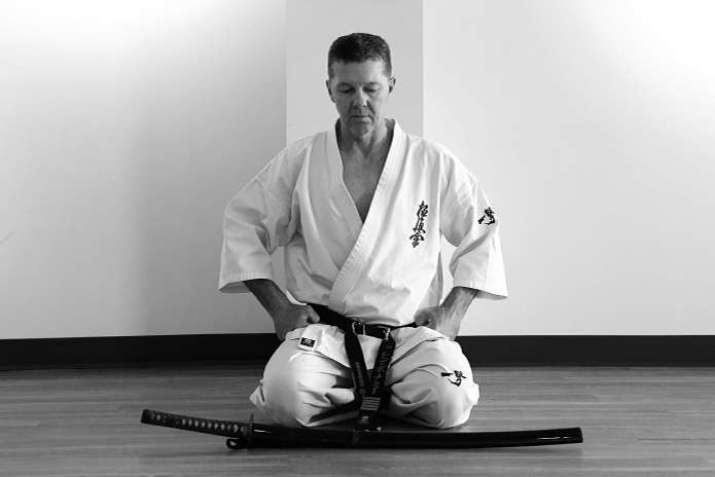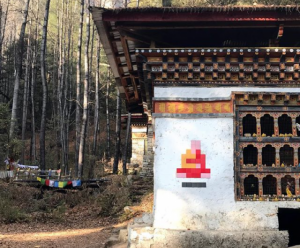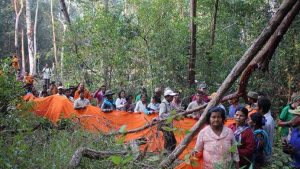
Sitting meditation isn’t what it used to be.
I can imagine the benefits of sitting meditation after a long day hauling water, working in the fields, and using my legs as my primary mode of transportation. But what does it mean to meditate when I sit for my meals, sit in my car, and then sit at a desk for most hours in my day?
Obviously, there is movement. I play ball with my son, prepare food, run errands, water plants. But really, the bulk of my time is spent in a seated position. I am sure that if I time traveled into the past—anywhere in the world really—people would be astounded to learn about the amount of time I spend not moving. Given that reality, how does it make any sense to add sitting meditation to my schedule? It’s just more sitting and I am certain I do enough of that.
I know the counterargument. Sitting to write an email is not the same as sitting to meditate. The purpose is completely different, as is the process, but I wonder at times whether my body registers the distinction. To my body, aren’t I just sitting again?
My karate practice has brought this line of questioning to the forefront. I have been practicing karate for about five years—not a very long period of time, but enough to give me a taste of its potential—and I am beginning to see something that was not obvious to me before.
Karate involves perpetual movement, but it is not a sport (you would offend any serious karateka to say otherwise!). It is a discipline, a way of life, a philosophy. It is rigor incarnate. Kyokushin karate in particular (the type I practice, which is heavily focused on full-contact fighting) is about pushing oneself to the absolute limit. Kyokushin can be macho—ridiculously macho in fact—with its loud cries to fight and never surrender. Indeed, I sometimes find the whole thing slightly ridiculous, with our bowing and apparent white-clad fanaticism.
But there is much more to it than that. Something beneath the surface of which I am continually catching glimpses. There is a call to transformation in Kyokushin karate. A call not to become more of oneself, not to become bigger, faster, or more disciplined, but to go through oneself. To let go of everything you think you are and everything you are afraid of, every limit you believe yourself bound by—to become free.
This might sound strange. It must. But it is as true as I know it to be. And it seems to me that, somehow, it is precisely what Buddhism has been requesting of me, too. When my students ask me to define Buddhism, I say all kinds of things. I give history lessons, describe festivals, introduce the art of renunciation, but there is one thing that Buddhism seems to be above all else: a call for the radical transformation of the mind. That is the bottom line to me. Buddhism invites us to eliminate the walls that make us narrow, to dissolve the self, and to open ourselves up to an inner vastness that is beyond most of our imaginations. A vastness we carry inside that is wider than the biggest universe we could ever dream up.
When I practice karate, I feel that call coming for me. I watch my teacher and I know that this is what he is asking us to do. He moves with a fluidity that seems to transcend boundaries—as though he knows something about this call that I am only beginning to understand. His body is full of boundaries and limitations. He has cracked his ribs, broken his nose, shattered his jaw, and goodness knows what else. He wears scars of every caliber like decoration.
He also has Parkinson’s—a disease that has no cure. A disease he fights every day of his life. Shihan’s body embodies limitation, and yet nothing about him seems limited to me. He floats through his karate movements as though they are a natural extension of who he is. As though he knows what space is, even when his hand shakes. He is a master in the truest sense of the term because of this. Because he knows space and swims in it with ease. By watching him these past few years, I have learned that this is what karate is inviting me to try. It is inviting me to experience vastness in a body that is bounded. To experience transformation all the while remaining right where I am.
I am not abandoning my sitting practice. I am not tossing it aside in favor of something else. I couldn’t; it is too dear to me. But I must also meet my sedentary reality head-on and not pretend I have spent the better part of my day pulling rice stalks out of a field. I need to go through my body and not just sit through my mind if I am ever to catch a glimpse of the inner vastness I know is there. When I let go of my thoughts and give in to karate practice, I can feel inner walls dissolving. It does not happen often, but when it does I recognize it. I see that I am not who I thought I was. That I am not the bounded being I imagined. That there is no “I” to look for anymore.
Isn’t this what Buddhism has been trying to teach me all along?













